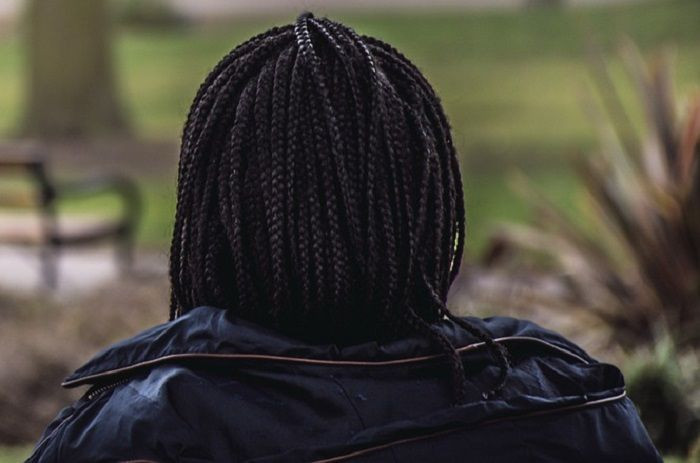Hairstyles, Not Hair Type, Responsible For Widespread Hair Loss In Black Women

Hair can be a touchy subject. It’s considered an essential part of overall identity: especially for women, that’s why many of us try our best to care for and manage it. However, while most of us know that moisture and trimming split ends are essential for hair growth and strong, healthy hair, how we style our hair could also be detrimental to its health. A new research review published in the Journal of the American Academy of Dermatology found a strong association between certain scalp-pulling hairstyles — many of which are common among black women — and gradual hair loss. Their research assigned a level of risk to a number of popular hairstyles, from straightening to tight ponytails.
Traction alopecia, a form of gradual hair loss caused by constant strain or tension, affects an estimated one-third of African-American women. Fortunately, unlike others, this form of alopecia can be easily stopped and reversed. Still, the current study’s researchers urge dermatologists to better educate themselves about hairstyles that can contribute to this condition, including tight ponytails, braids, knots and buns.
"Hair is a cornerstone of self-esteem and identity for many people, but ironically, some hairstyles meant to improve our self-confidence actually lead to hair and scalp damage,” Dr. Crystal Aguh, assistant professor of dermatology at the Johns Hopkins University School of Medicine, said in a statement.
Aguh and her colleagues combed through 19 studies and found a compelling correlation between high-tension hairstyles and hair loss. The researchers then categorized hair-styling practices into low-, moderate- and high-risk styles based on the degree in which styles exposed hair follicles to tension, weight, heat and hair-altering chemicals, such as straighteners.
High-risk hairstyles include braids, dreadlocks, weaves and extensions, especially when applied to hair that has been chemically straightened. These styles are very popular among African-Americans partially because they are low-maintenance, requiring little upkeep, and they look good. Although they are aesthetically pleasing, the constant pulling of the hair in one direction could be doing its health a disservice. Serious damage can also be done by chemical straightening, which weakens the hair shaft, making it more susceptible to breakage. Tight weave or extensions — especially if they are affixed with adhesive glue directly on the scalp also increases risk for hair loss.
Moderate-risk styles include some of the same hairstyles noted to be high-risk, except they are performed on natural hair that have not been chemically straightened or processed, thus less likely to result in hair loss. This category also includes the use of wigs, and heat-related straightening products such as flat irons. Though heat-related products aren’t associated with traction alopecia per se, researchers say they can weaken hair shaft leading to "significant" hair loss when traction is applied. Meanwhile, wigs attached with clips and adhesives to keep them in place can result in breakage.
"Dermatologists need to be conscious of the fact that many high- and moderate-risk hairstyles greatly improve hair manageability, and simply telling patients to abandon them won't work for everyone," Aguh said. "Instead, physicians can educate themselves to speak with patients about making the best hairstyling choices to minimize preventable hair loss."
Higher-risk, tension-creating hairstyles can create a tricky situation because these patients become even more reliant on weaves and extensions to cover spots where hair is lost. Some low-tension styles that should be considered include loose buns, loose-hanging styles, such as wearing your hair down, and styles or updos that put little friction on the hair and scalp.
Researchers also offered guidelines for dermatologists and other care providers to prevent and manage hair loss from traction alopecia, especially when dealing with African-American patients. Aguh said the first line of therapy is to loosen braids and other high-tension styles, to relieve the pressure of weight on the hair follicles permanently or periodically. They also say that braided hairstyles should not last longer than two to three months, and weaves or extensions should be removed after six to eight weeks.
Source: Haskin A. Aguh C. All Hairstyles are not Created Equal: What the Dermatologist Needs to Know About Black Hairstyling Practices and the Risk of Traction Alopecia. Journal of the American Academy of Dermatology. 2016.



























